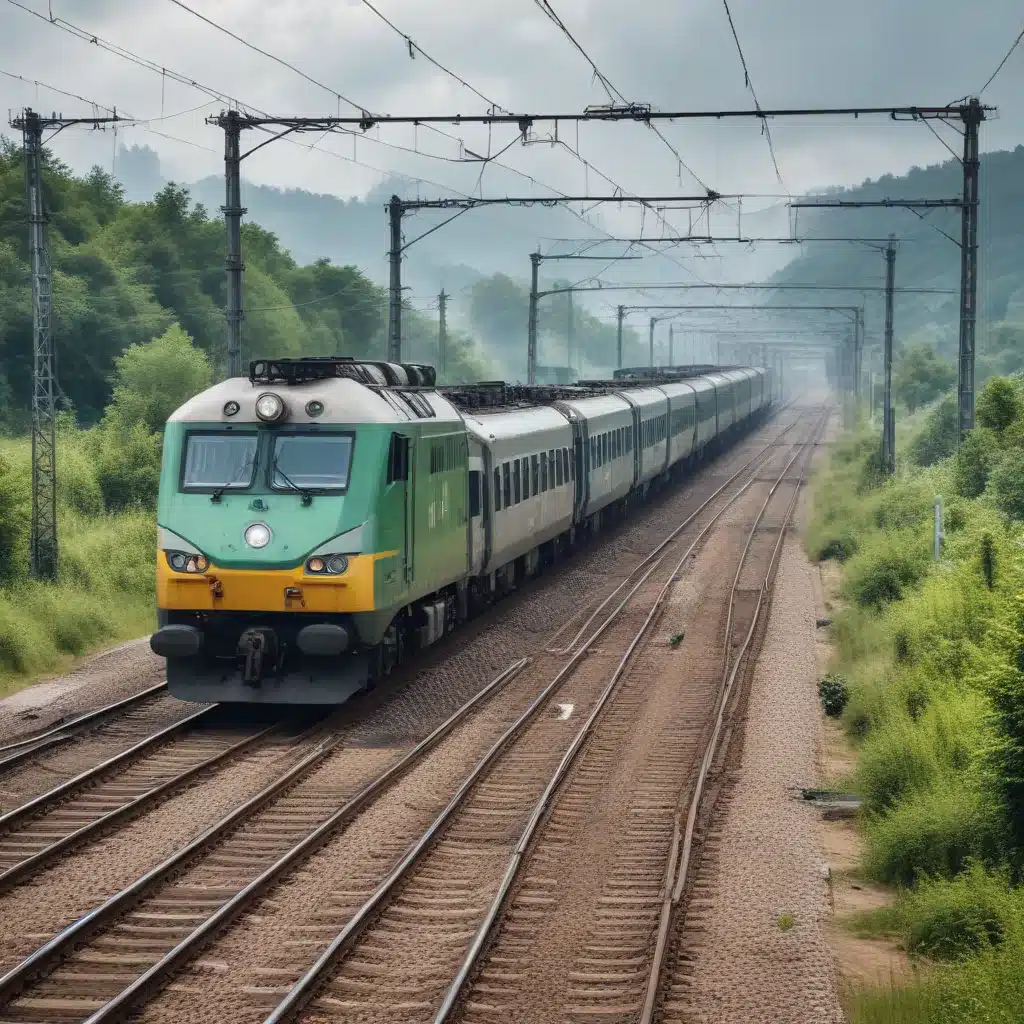
The railway industry is undergoing a transformative shift, harnessing the power of digital technologies to enhance efficiency, sustainability, and passenger experience. As Europe continues its ambitious push towards net-zero emissions, the digitalization of rail transportation is playing a pivotal role in driving this green transition.
Intelligent Transportation Systems
Across Europe, railway operators are embracing Intelligent Transportation Systems (ITS) to optimize their operations. These advanced systems leverage a range of cutting-edge technologies, from Internet of Things (IoT) sensors to Artificial Intelligence (AI) algorithms, to gather and analyze real-time data on train movements, infrastructure conditions, and passenger flows.
By integrating this data, ITS can provide predictive maintenance solutions that anticipate equipment failures before they occur, allowing for proactive interventions and minimizing disruptions. This not only improves operational efficiency but also extends the lifespan of railway assets, aligning with the principles of the circular economy.
Data-Driven Decision Making
The wealth of data generated by ITS enables railway operators to make more informed, data-driven decisions. AI-powered analytics can identify optimization opportunities, such as route planning to reduce energy consumption and passenger flow management to enhance the travel experience.
Moreover, the seamless integration of multimodal transportation networks empowers passengers to plan their journeys seamlessly, with real-time updates on train schedules, connecting services, and even carbon footprint estimates. This level of data-driven visibility and interoperability is crucial for encouraging a modal shift towards greener transportation modes.
Sustainability Initiatives
The digitalization of rail transportation is not only improving operational efficiency but also advancing Europe’s sustainability agenda. By leveraging smart technologies, railway operators can implement a range of eco-friendly initiatives, from energy-efficient traction systems and regenerative braking to waste management strategies that promote the circular economy.
For instance, the integration of digital twin technology allows operators to simulate and optimize the energy consumption of their rolling stock, leading to significant emissions reductions. Similarly, the use of predictive maintenance techniques can minimize the need for resource-intensive repairs, contributing to a more sustainable rail network.
AI-Powered Railway Services
At the heart of the digital transformation in rail are AI-powered services that are redefining the passenger experience and operational efficiency. From predictive maintenance to autonomous train operations, these intelligent technologies are shaping the future of railway transportation.
Predictive Maintenance
By combining IoT sensors, big data analytics, and advanced AI algorithms, railway operators can transition from reactive to predictive maintenance strategies. This proactive approach allows them to identify potential equipment failures before they occur, enabling timely interventions and reducing costly downtime.
Passenger Experience Enhancement
AI-powered services are also transforming the passenger experience. Computer vision and natural language processing technologies are being integrated into railway infrastructure to enhance passenger flow management, real-time information updates, and even personalized service offerings.
Operational Optimization
AI is revolutionizing the way railway operations are managed. Intelligent scheduling and routing algorithms can optimize train movements, minimizing delays and improving on-time performance. Additionally, autonomous train technologies are being developed to enhance safety and energy efficiency, paving the way for a new era of driverless rail transport.
Environmental Impact of Rail Digitalization
The adoption of digital technologies in the railway industry is driving significant environmental benefits, contributing to Europe’s ambitious decarbonization efforts.
Carbon Footprint Reduction
By optimizing energy consumption, route planning, and vehicle utilization, the digitalization of rail transportation is directly reducing greenhouse gas emissions. This is particularly crucial in the context of Europe’s push towards net-zero emissions by 2050.
Energy Efficiency Improvements
The integration of smart grid technologies and renewable energy sources into railway infrastructure is further enhancing the industry’s energy efficiency. Regenerative braking systems, for example, can capture and reuse the energy generated during deceleration, reducing the overall energy demand of rail operations.
Waste Management Strategies
The circular economy principles underpinning the digitalization of rail are also driving more sustainable waste management practices. Through predictive maintenance, railway operators can minimize the need for resource-intensive repairs and extend the lifespan of their assets, reducing material waste and promoting a more circular approach to transportation.
Challenges and Considerations
As the railway industry embraces digitalization, it must navigate a range of technological, regulatory, and security challenges to ensure a seamless and responsible transition.
Technological Integration
Integrating advanced digital technologies, such as IoT, AI, and digital twin, into legacy railway systems can be a complex and time-consuming process. Ensuring interoperability and scalability across diverse infrastructure and rolling stock is crucial for unlocking the full potential of digitalization.
Regulatory Frameworks
The digitalization of rail transportation must also align with evolving regulatory frameworks, particularly around data privacy, cybersecurity, and sustainability. Ensuring compliance with General Data Protection Regulation (GDPR) and other relevant policies is essential for maintaining public trust and avoiding legal complications.
Cybersecurity Measures
As railway systems become increasingly connected and data-driven, the need for robust cybersecurity measures becomes paramount. Protecting sensitive operational and passenger data from cyber threats is crucial for safeguarding the reliability and integrity of rail services.
Despite these challenges, the digitalization of railway transportation is poised to play a pivotal role in Europe’s transition to a sustainable, efficient, and interconnected mobility landscape. By harnessing the power of AI-powered services and embracing the principles of the circular economy, the rail industry is shaping a greener future for transportation.
Explore the European Future Energy Forum to learn more about the cutting-edge innovations and forward-looking strategies driving the energy transition across Europe.






